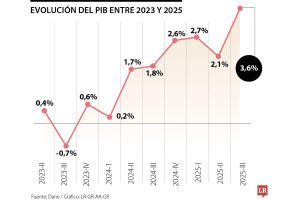U.S. business activity fell to a three-month low in June as services growth eased for the first time this year and the contraction in the manufacturing sector deepened, closely watched survey data out Friday showed.
The overall picture, though, indicated U.S. economic growth ticked up a notch in the second quarter even as worries persist that the Federal Reserve’s aggressive interest rate increases over the past year will trigger a recession.
S&P Global said its flash U.S. Composite PMI Output Index, which tracks the manufacturing and services sectors, fell to a reading of 53.0 this month, the lowest since March. Nonetheless, it was the fifth straight month that the PMI remained above 50, indicating growth in the private sector.
The survey data, which was collected between June 12-22, added to evidence the U.S. economy has continued expanding in the April-through-June period, although it is increasingly reliant on the vast services sector for overall growth in gross domestic product.
“The overall rate of expansion of business activity in the US remained robust in June, consistent with GDP rising at a rate of 1.7% to put second quarter growth in the region of 2%,” said Chris Williamson, chief business economist at S&P Global Market Intelligence.
The Atlanta Fed’s GDP Now model currently pegs second-quarter growth at an annualized rate of 1.9%. The economy grew at a 1.3% rate in the first quarter, a figure some economists see getting revised a touch upward next week when the Commerce Department reports its final growth estimate for the first three months of the year.
MIXED BAG
Williamson said the Fed’s decision last week to forego lifting rates at its first meeting since it began increases in March 2022 was bolstering services business optimism, but any further hikes could weigh on a sector that has become the sole driver of growth.
Fed officials themselves projected rates could rise by perhaps half a percentage point more by year-end from the current policy-rate range of 5.00% to 5.25% as inflation remains stubbornly above their 2% target range and is increasingly seen as a product of activity in the services sector.
Investors expect the Fed to return to lifting rates – by a quarter point – at its meeting next month, but are far from convinced the central bank will go beyond that.
The S&P Global survey’s measure of new orders received by private businesses slipped to 53.5 this month in June from 54.3 in April, with the services sector keeping that key metric above the 50 mark. New orders on the manufacturing side dropped to a six-month low.
Input prices showed the inflation handoff underway from manufacturing to services, which could keep the Fed on a hawkish footing. Overall input prices were up this month, with the services sector’s gauge climbing to the highest since January even as input costs at factories slid to the lowest in about three years.
Businesses also increased headcount, though job growth was the softest in five months.
The survey’s flash services sector PMI fell to 54.1 from 54.9 in May. Economists polled by Reuters had forecast the services PMI would ease to 54.0.
Its flash manufacturing PMI dropped to 46.3 from 48.4 in May and was weaker than economists’ median forecast of 48.5. That index has registered growth just once since last October.
“While improving supply conditions had helped boost manufacturing production in prior months, an increasingly severe downturn in new orders mean factories are running out of work,” Williamson said.







